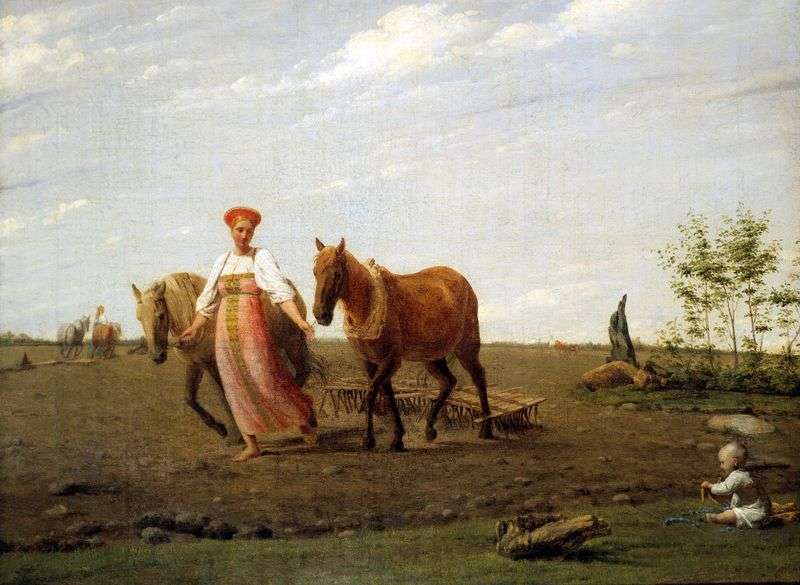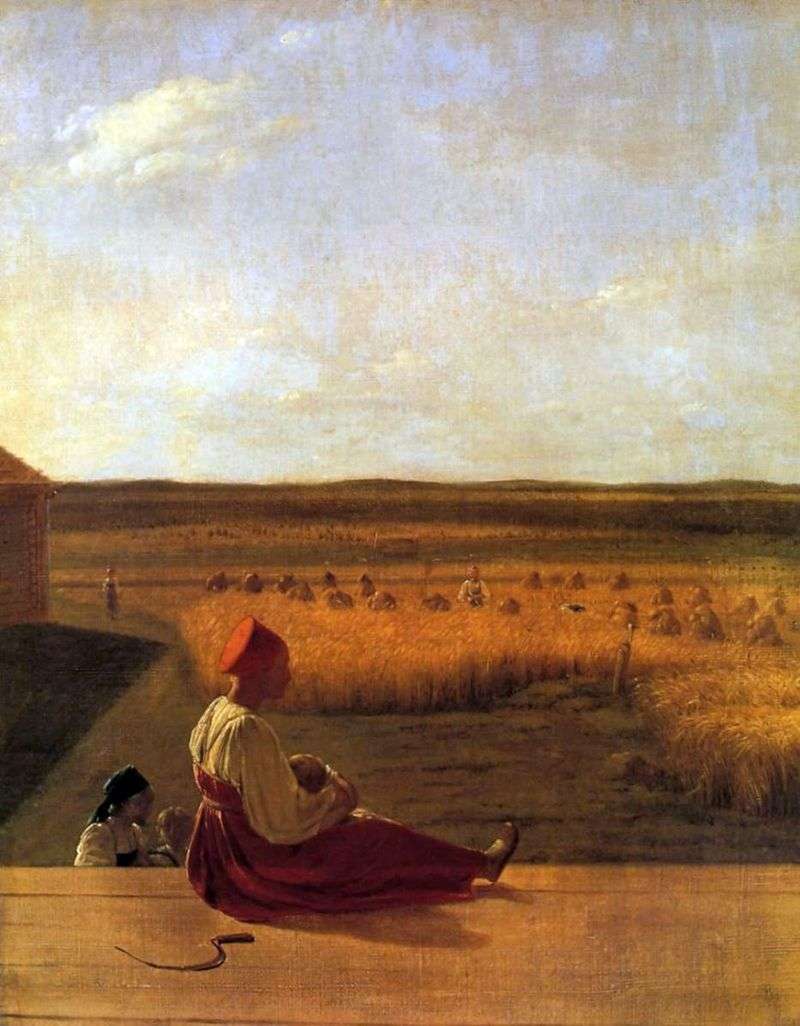
The painting “The Sleeping Shepherd Boy” is one of the most poetic creations of Venetsianov. The artist with particular warmth and lyrical elation portrayed the peasant children. The purity and harmonic clarity of his artistic thinking perfectly suited the tasks of recreating the children’s world.
None of the Russian masters of his time achieved such penetration, such acute veracity and at the same time such a power of poetic feeling in depicting children’s images and childhood experiences. This, however, does not exhaust the content of the “Sleeping Shepherdess”. All the main features of the artistic language of Venetzianov, the whole structure of his figurative thinking, all the progressive aspects of his art, but also the historically explainable limitations of his realism, are clearly and graphically evident here.
In the “Sleeping Shepherdess” there is no action. A peasant boy is seen lying asleep in a field; he sits on the bank of a narrow river, leaning against the trunk of a large old birch, and behind him in the background of the picture opens a typical Russian landscape with a rickety hut, rare Christmas trees and boundless, stretching to the very horizon fields. But in this simple story deep emotional content is embedded. The picture of Venetsianov is imbued with a sense of peace and tranquility, a lyrical love for nature and man.
The main theme of the picture is a harmonious, fusion of man with nature, and Venetsianov in this is close, undoubtedly, to the sentimentalists of the late 18th century. In “Shepherdess” there are no traces of deliberate posing, on the contrary, the whole face of a sleeping boy is marked by features of a lively and unconstrained naturalness. Venetsianov with particular care emphasizes the national Russian type in it and gives his face an expression of genuine and touching spiritual purity. Criticism sometimes reproached Venetsianov for a somewhat mannered pose of a shepherd, but this reproach is unfair – it is the posture of a sleeping boy with her peculiar numbness, well conveying the state of sleep, indicating a mark of the artist’s observation and the closeness of his images to living nature.
An important role in the picture is played by the landscape. It becomes no longer a “background” for the image of man, but an independent and essential means in the transmission of feelings and in the construction of the image. Venetsianov reproduces its holistic appearance, deliberately emphasizing the national features of the landscape.
Venetsianov appeared in the landscape as the founder of a new direction, later widely developed by Russian art of the XIX century. The state of peace and tranquility that characterizes the “Sleeping Shepherdess” is revealed and expressed primarily in the landscape with its calm, smooth, slightly rounded lines, with its wide dimensional rhythms, with its soft colors, built on a harmonious combination of gray, pink, green and blue tones. The image of nature, as well as the image of man, in the art of Venetsianov becomes the bearer of an idyllic worldview.
 Nurse with a child by Alexei Venetsianov
Nurse with a child by Alexei Venetsianov On the plowed field. Spring by Alexei Venetsianov
On the plowed field. Spring by Alexei Venetsianov In the harvest. Summer by Alexei Venetsianov
In the harvest. Summer by Alexei Venetsianov Gumno by Alexei Venetsianov
Gumno by Alexei Venetsianov Reapers by Alexei Venetsianov
Reapers by Alexei Venetsianov Morning of the landowner by Alexei Venetsianov
Morning of the landowner by Alexei Venetsianov Girl in a scarf by Alexey Venetsianov
Girl in a scarf by Alexey Venetsianov Bathers by Alexei Venetsianov
Bathers by Alexei Venetsianov